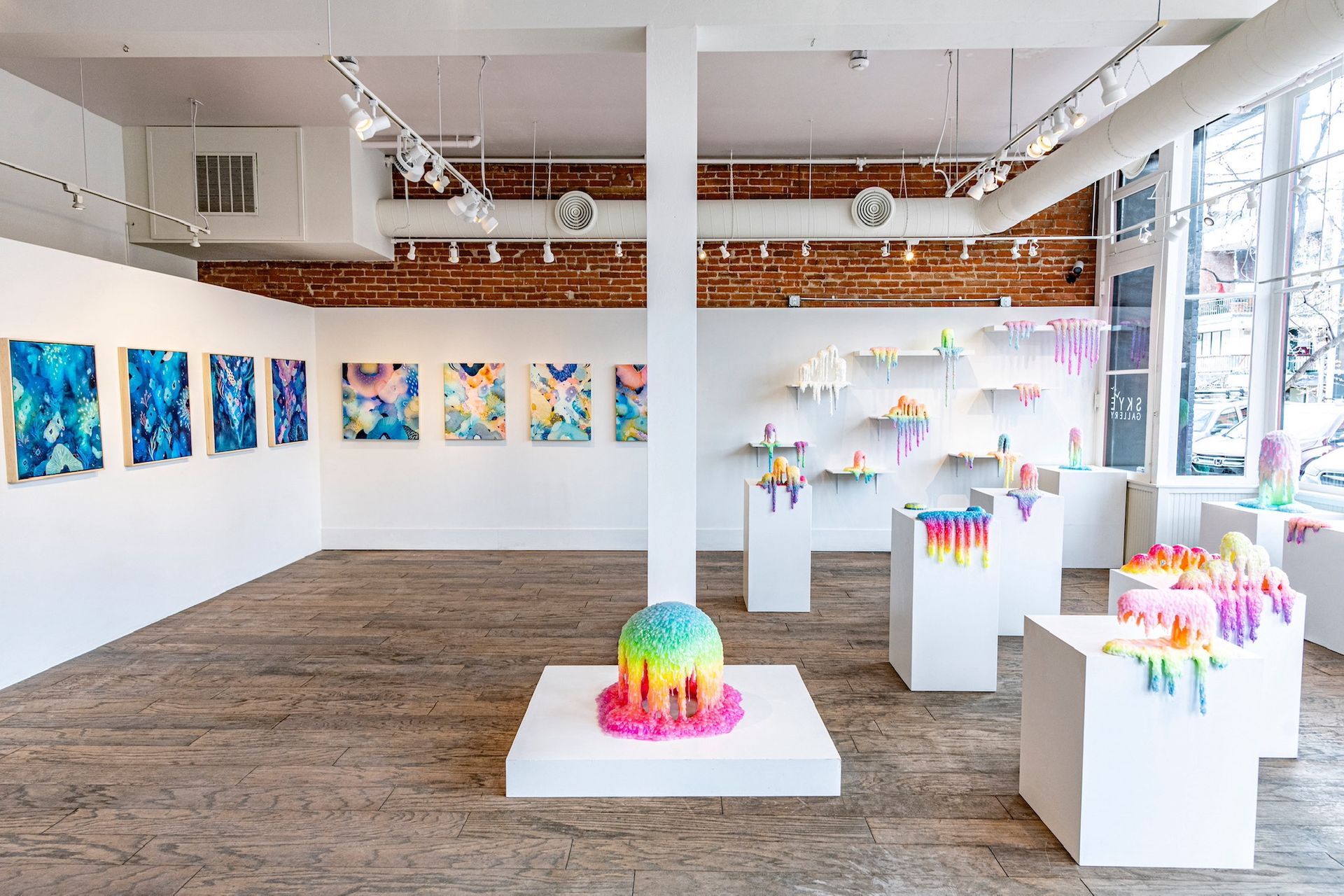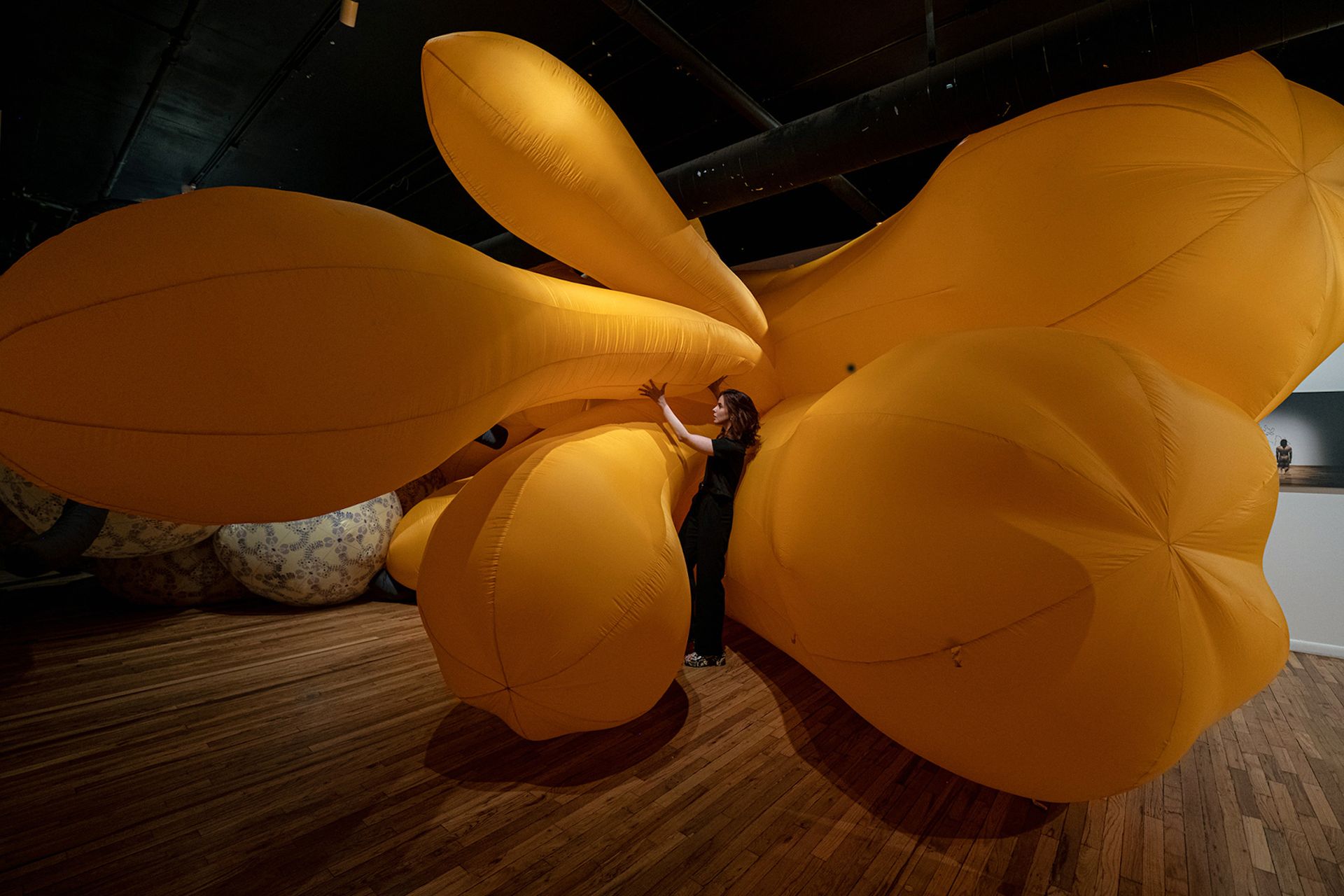As skis are traded for hiking boots and chair lifts go into hibernation, Colorado’s two cultural centres, Aspen and Denver, remain busy. Aspen was established as a small silver-mining town in the Roaring Fork Valley 150 years ago, but today it is famous for its incredible beauty and concentration of wealth. The number of art collectors with second homes in the city, such as Jorge and Darlene Pérez, and Jamie Alexander Tisch, along with bedrock galleries and the arrival of major commercial players, have encouraged cultural investments to thrive in recent years. Denver art dealers, meanwhile, find success with regional artist rosters and passionate local engagement, despite less media coverage and fewer collectors than their colleagues up the hill.
The crowning moment for arts groups in the region is the summer gala season, so it is no wonder that the galleries follow their collectors into the mountains. Among the major cultural organisations to host events are Aspen Words’ Book Ball and the inaugural gala for The Arts Campus At Willits performing arts centre in Basalt (both held in June); the Aspen Institute’s annual Socrates Benefit Dinner (9 July); the Recognition Dinner at the Anderson Ranch Arts Center (13 July); and the evening that anchors it all, ArtCrush, the Aspen Art Museum’s annual fundraiser (4 August).
A relatively recent addition to the calendar aims to unite some of these disparate organisations. Aspen ArtWeek, a five-day programme of exhibitions leading up to ArtCrush, returned from a pandemic hiatus in 2021 under the guidance of Nicola Lees, the director of the Aspen Art Museum, who joined the institution in 2020.“I’m focused on building our audience and open to different opportunities,” she says.
Intersect Aspen (formerly known as Art Aspen) has been held just before the museum gala since 2010, as have many other events, but there had not been much co-ordination among the different groups. Several local dealers mentioned that the museum’s former director and the previous owner of the fair were often at odds, but with new leadership at both organisations, Aspen Art Week has become a successful structural catalyst.

Installation view of works by Yellena James and Dan Lam at Skye Gallery in Aspen, 2021 Courtesy Sky Gallery
“Aspen is a fishbowl with a current,” says Christine Heller, the director of private sales for Sotheby’s Aspen. The auction house established a permanent gallery at the base of the mountain in 2022, after clients expressed a desire to spend more time in their second homes during and after the Covid-19 pandemic, thus creating a need for more sustaining cultural events. Respected local galleries like Baldwin, Galerie Maximillian and Hexton have presented banner art shows and events during the summer months for decades. But it was not until recently that collaboration between commercial businesses and non-profits have efficiently and effectively blended their resources to mutual benefit, according to Agustina Mistretta, the director at Hexton Gallery.
Marianne Boesky Gallery, which owned a permanent space in Aspen from 2017 to 2021 that is now occupied by Christie’s, returned to the city on 30 June in a space on East Hyman Avenue, across the street from the Aspen Art Museum. The gallery’s programme for the summer in Colorado includes two group shows; the current exhibition (until 4 September) features works by the Haas Brothers, Sarah Meyohas and Celeste Rapone.
As the Aspen art scene expands, the limited space of the city’s historic footprint has caused some pain for local dealers, however, and might encourage others to show more established international artists with higher sales points over emerging or home-grown talent.

Installation view of Taking Up Space (2023), on view as part of the 2023 Biennial of the Americas and Cities Summit of the Americas, featuring Ikebana (2019) by Angel Ricardo Ricardo Rios and Encomienda (2019) by Carlos Martiel. Image courtesy Jordan Spencer and K Contemporary.
“When I opened in 2016, I was the only one exhibiting emerging artists,” says Skye Weinglass, the owner of Skye Gallery, which was previously located on Aspen’s busy Cooper Avenue. The heavy foot traffic helped the dealer make enough sales to cover her rising overheads, as the building’s landlord started doubling the rent every six months from 2020 until she finally left in 2022, at the end of a $25,000-per-month lease. Skye is operating her gallery online until she can find a new physical location. “I was recently offered a $100,000 lease for two-and-a-half months,” she says.
In Denver, galleries thrive through a roster of Colorado artists, high attendance at exhibitions and some creative methods to reach new clients. It is typical to find packs of poets, musicians and artists lingering at a DIY art event who then travel across town to an opening at Leon Gallery, a commercial-turned-non-profit art space.
Doug Kacena, who owns K Contemporary, has been part of the art scene in Denver since 1999. He considers fairs an important component of his business and will return to Intersect Aspen this summer. “The best way to support artists is to buy work and create space for them among national and international artists,” he says. At last year’s fair, Kacena placed art with a senator, a Whitney Museum of American Art trustee and a curator acquiring for another museum.

Ana María Hernando's Geometrías Tiernas at Robischon Gallery in Denver Courtesy of Robischon Gallery.
Rule Gallery, meanwhile, represents both emerging artists and regional veterans, including the geometric painter Clark Richert, who died in 2021. Richert was a founder of Drop City, an artist community started in Trinidad, Colorado in 1960. Instead of fairs, Rule invests in a second location in Marfa, Texas. Like Aspen, Marfa attracts art tourists and collectors who own homes in the Lone Star State.
This year, Robischon Gallery owners Jim Robischon and Jennifer Doran celebrated their 45th year of organising museum-quality shows. Robischon got his start working in his dad’s framing shop as a kid; now his roster includes artists from outside the state who have Colorado connections, such as Barbara Takenaga and Christian Rex van Minnen, as well as Denverites Derrick Velasquez and Trine Bumiller. But Robischon also worries about how much the city’s downtown scene has changed since the pandemic. “There have been bookstores, galleries and a salon across the street [from the gallery] since 1990,” he says, but many of those fixtures are now gone.


